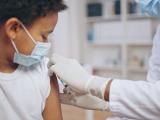A study today in JAMA Network Open found that social media posts spotlighted heightened levels of anxiety, anger, and depression among emergency medicine (EM) physicians during COVID-19 compared with posts during the prepandemic period.
The authors of the study say their findings offer insight into the professional burnout seen widely across the medical field in the past 3 years.
The study analyzed Twitter posts made between March 2018 to March 2022 by self-described emergency medicine physicians and resident physicians. To measure the effect the pandemic had on doctors, the researchers focused on tweets made from the top 10 US counties for COVID activity: Los Angeles, California; Maricopa, Arizona; New York, New York; Miami-Dade, Florida; Cook, Illinois; Harris, Texas; San Diego, California; Riverside, California; Broward, Florida; and San Bernardino, California.
The authors used machine learning to analyze the themes of Twitter posts during the prepandemic period, the early pandemic, and across subsequent phases of the pandemic, as defined by new and emerging variants. Positive and negative language within tweets was measured.
Anxiety, anger as pandemic began
The researchers analyzed tweets from 471 US physicians who together posted 198,867 messages. The most common Twitter themes before the pandemic were free open-access medical education, residency education, gun violence, quality improvement in healthcare, and professional resident associations.
During the first year of the pandemic, themes switched to health behaviors, pandemic response, vaccination, unstable housing, and emotional support for others.
Compared with the prepandemic period, there was significantly less positive, and concordantly more negative, language used during COVID-19.
"Compared with the prepandemic period, there was significantly less positive, and concordantly more negative, language used during COVID-19," the authors said. "Estimates of loneliness, anxiety, anger, and depression also increased significantly during COVID-19."
The authors noted that the biggest change occurred between prepandemic language and language used during the pre-vaccination phase of the pandemic. Negative language and anxious language peaked during the early months of the pandemic.
"This study reveals significant spikes in negative psychological constructs within Twitter language across EM physicians," the authors said. "We saw striking shifts throughout the pandemic that could be identified through their social media content. These signals provide another method of evaluating the mental health of the workforce and those in training at scale."


















